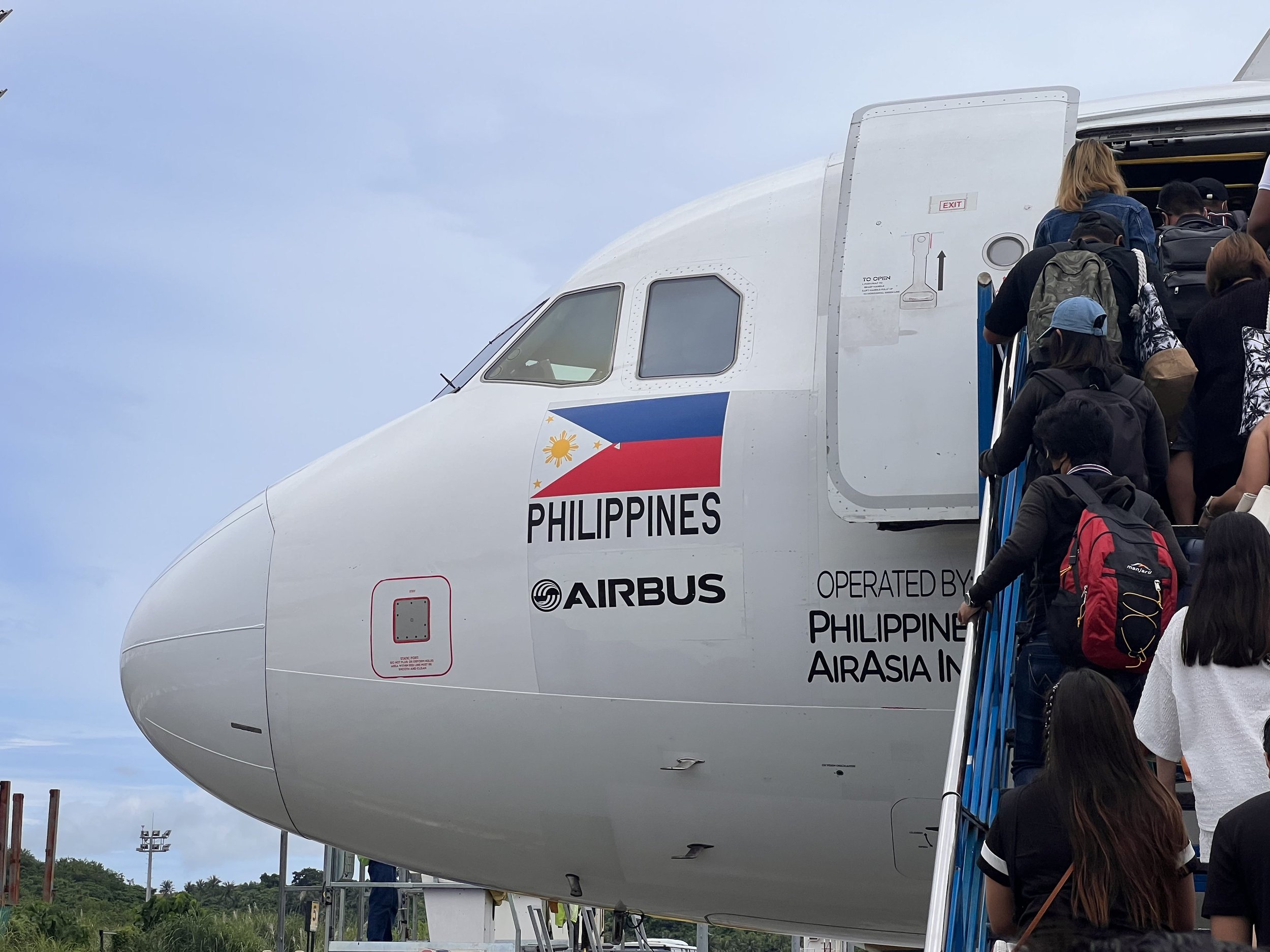Low Cost Carrier Battle: Is Air Asia Philippines as bad as Cebu Pacific?
Air Asia is synonymous with low-cost travel in and around the ASEAN region. Inspired by the likes of Southwest in the US as well as easyJet and Ryanair in Europe, Air Asia has attempted to bring a taste of low cost travel to the region - but does it achieve that? Let’s take a look on how they perform on a Philippine domestic service.
How does Air Asia function?
Air Asia is a complicated affair which is primarily headquartered in Malaysia. The company is owned by Capital A, an investment vehicle, which in turn is owned by Tune Group - which is the company of Air Asia’s founder Tony Ferndandes.
Earlier in 2024, Air Asia X, the mid-to-long haul airline which is owned by Tune Group, agreed to purchase Air Asia Aviation Group Limited, which is owned by Capital A. It all amounts to two companies which licenced the same name now merging to become one combined group under the same owner.
Interior shot of Thai Air Asia aircraft
While booking Air Asia flights it may seem a joined up system, the actual set-up of Air Asia within ASEAN is quite complex due to various national ownership laws. Unlike the European Union, where a Lithuanian airline could theoretically operate domestic flights within Italy, ASEAN does not permit similar activities. As such, Air Asia have subsidiaries for each country they operate in.
In some countries, such as Cambodia and formerly India, they had to set-up the domestic Air Asia as a joint venture with a local partner to get air traffic rights.
In short, it makes Air Asia a complex set-up - and likely to add a high bureaucratic-induced cost burden for the airline’s operations.
How is Air Asia in the Philippines?
We flew Air Asia from the tourist hotspot of Boracay to the second largest metropolis in the country, Cebu. Our flight departed on a soggy day during early August with a short trip to the airport from our hotel passing Spabucks on the way…
Boracay Airport is quite a simple affair but does need to scale to meet the demands of some international traffic, primarily from Korea. Check-in was quite slow, despite only being a domestic flight, and there was a priority lane for people who had the Value Pack and Premium Flex tickets as well as those with special needs.
Once through security, I recommend heading straight upstairs to relax prior to your flight. Very few people head up here and there is plenty of empty seats available during our visits, it also has the added benefit of great views across the apron and runway.
Most planes are located at another part of the airport, closer to the arrival terminal, meaning that you are bussed over in a coach. This is a far less efficient process than the usual Cobus-3000 you find in Europe as there is added time for people to fuss about finding a seat and putting their bags somewhere
You can get some good shots of the aircraft on the way over, though. For some unknown reason, Philippine supermarket chain Puregold sponsors one the Air Asia aircraft liveries.
Boarding took place through both the front and rear exits of the aircraft using stairs, as is common on low cost carriers. I must admit, the Air Asia red livery does look rather striking in all the guises I’ve seen. A large Philippine flag adourns this aircraft.
After coming unstuck on Air Asia several years ago, I opted for a front row seat with plenty of legroom. There is no recline on Air Asia’s seats, but it felt suitably padded and comfortable enough for the one hour to Cebu.
A buy-on-board service called Air Asia Santan is available, although I would’ve expected a bit more localisation of food rather than offering Nasi Lemak on a domestic Philippine service. Red merch is also, apparently, available to purchase.
This was a rather packed service to Cebu and overhead bin space was at capacity.
The flight itself was uneventful with little turbulence and great views of the archipelago as we left Boracay. Phottos with scratches on the window did leave a lot to be desired.
Toilets were a very normal and cramped A320 design that were located at the front and rear of the cabin. The language on the signage in the toilet suggested the plane previously operated in Malaysia or Indonesia, likely for another national subsidiary of Air Asia.
We landed in Cebu on time and with little trouble. We deplaned using buses and were directed directly into an arrival baggage hall where our luggage arrived swiftly.
Conclusion
Air Asia is just like any other low cost airline. They get you there safely and usually at a good price, providing you don’t need a lot of baggage.
Are they better or worse than Cebu Pacific? In the air, they’re probably about the same considering the basic product provided. Although I would argue that on the ground, my experiences with Cebu Pacific in Manila left a lot to be desired and I would avoid them in future. If you want to compare for yourself, here’s a review of an international Cebu Pacific flight on an Airbus A320 and a domestic Cebgo flight on a ATR-72 turboprop aircraft.
And how does Air Asia Philippines compare to other parts of ASEAN? Very similar with the same core product offered. The only real difference will be the personality of the crew and the traits of that country (my Thai Air Asia flight crew felt more reserved than the Philippine crew on this flight, as an example).





























